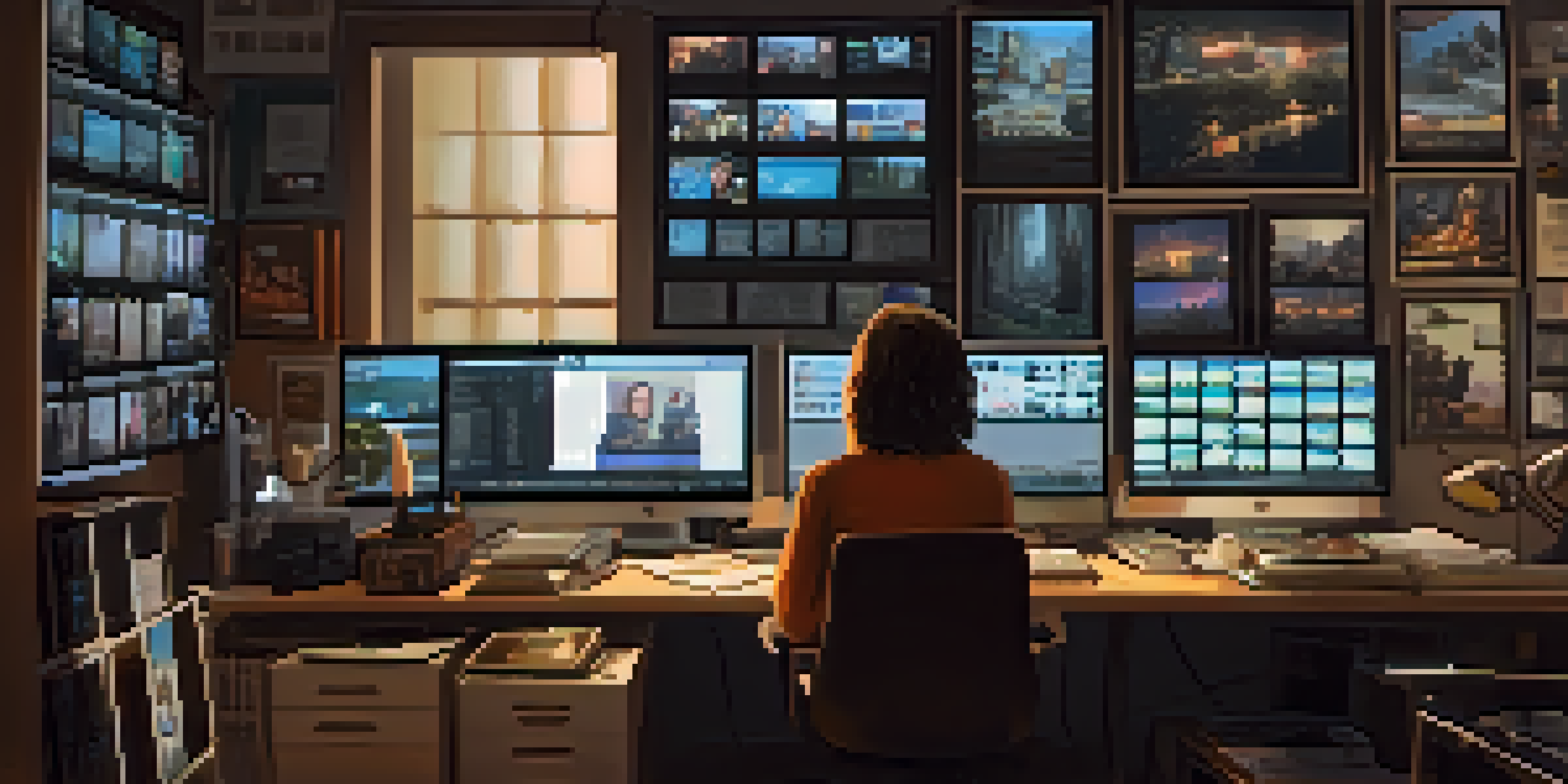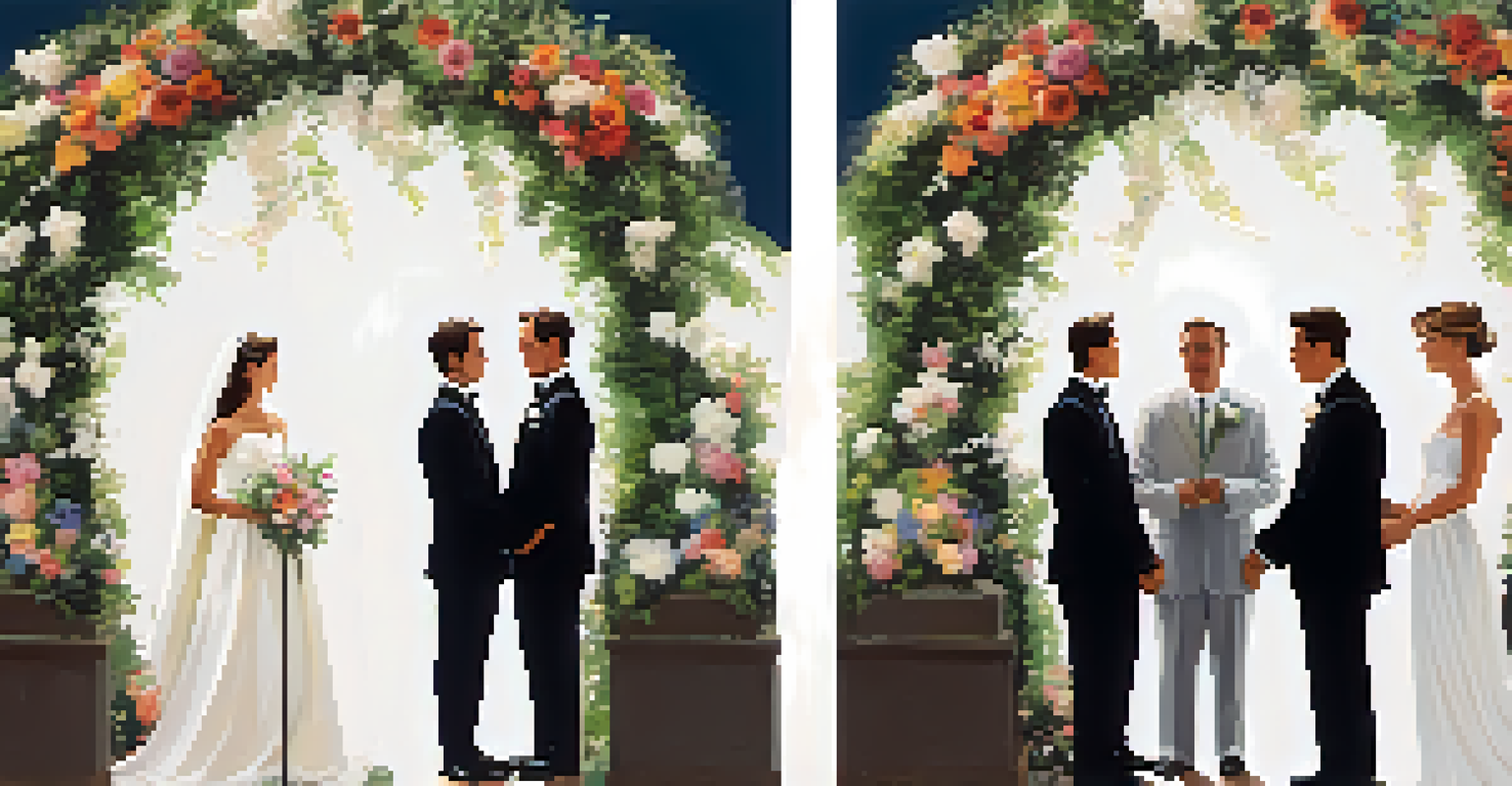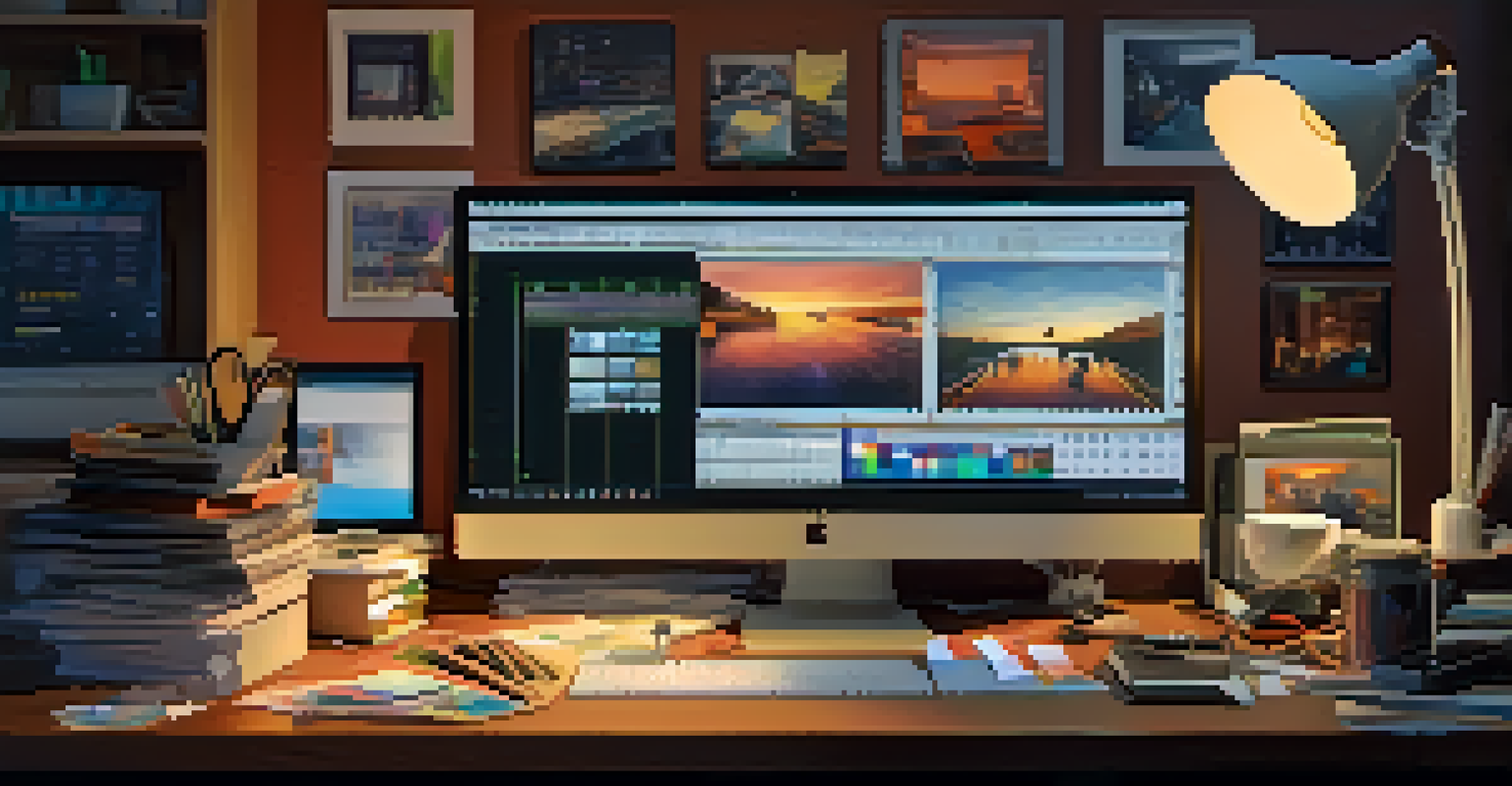How Film Editors Create Emotional Impact Through Cuts

The Art of Timing: Understanding Cuts for Emotional Impact
Timing in film editing is crucial; it’s not just about cutting scenes, but about creating a rhythm that resonates with the audience. Editors carefully choose when to cut a scene to evoke specific emotions, whether it's tension, joy, or sadness. For instance, a quick cut can heighten anxiety, while a slower transition might invite reflection.
Editing is not just about what you cut, but how you cut it.
Think of a suspenseful thriller: as the music builds, the editor might cut between a ticking clock and a character's anxious face. This juxtaposition amplifies the tension, making viewers feel the urgency of the moment. Such intentional timing can transform an ordinary scene into an emotionally charged experience.
By understanding the emotional weight of each cut, editors harness the power of timing to guide audience reactions. It’s a balancing act that requires intuition, creativity, and a deep understanding of storytelling.
Contrast and Juxtaposition: Creating Emotional Depth
Contrast in editing can significantly enhance emotional depth in storytelling. By juxtaposing contrasting scenes or emotions, editors can create a powerful narrative dynamic. For example, cutting from a serene moment to a chaotic scene can evoke shock and surprise in the audience.

Consider a film that transitions from a couple's joyful wedding to a subsequent funeral. This stark contrast can leave a lasting emotional impact, prompting viewers to reflect on the fragility of life. Such editing choices not only enrich the narrative but also deepen the audience's emotional engagement.
Timing Enhances Emotional Impact
Editors use cuts to create a rhythm that heightens emotions, shaping how audiences react to scenes.
This technique allows editors to play with the audience's expectations, making the viewing experience more immersive. By skillfully crafting these emotional contrasts, editors can transform ordinary storytelling into something profoundly impactful.
Building Tension: The Role of Cuts in Suspenseful Scenes
In suspenseful scenes, cuts are often used to build tension and keep the audience on the edge of their seats. Editors can manipulate the pacing of cuts to create a sense of urgency or impending doom. Rapid cuts during a chase scene, for example, heighten the excitement and adrenaline for viewers.
The best editing is the editing you don't notice.
An effective way to build tension is through strategic cuts that reveal critical information at just the right moment. By cutting away from a character right before a confrontation, the editor creates suspense, leaving the audience anxious about the outcome. This technique ensures that viewers remain engaged and invested in the story.
Ultimately, the goal of these cuts is to evoke a visceral reaction from the audience, making them feel the tension along with the characters. Thoughtful editing choices can turn a simple scene into a gripping experience that resonates emotionally.
Emotional Resonance: Connecting Characters and Audience
Film editors play a pivotal role in fostering emotional resonance between characters and the audience. By carefully selecting cuts that highlight a character's emotional journey, editors invite viewers to connect with their experiences. This connection is often achieved through close-ups and reaction shots that reveal inner turmoil.
For instance, a character's moment of realization can be accentuated by cutting to their facial expressions, allowing the audience to feel their pain or joy. This momentary pause in the action creates space for empathy and understanding. The editor's choices make these emotional moments more impactful and relatable.
Contrast Deepens Narrative Engagement
Juxtaposing contrasting scenes allows editors to evoke strong emotional responses and enrich storytelling.
The result is a shared experience that transcends the screen, drawing viewers deeper into the narrative. When audiences can relate to a character's emotions, they are more likely to be invested in the story, creating a lasting impression.
Symbolism through Cuts: Crafting Meaningful Narratives
Symbolism is a powerful tool in film editing, allowing editors to craft meaningful narratives through cuts. By using specific cuts to represent themes or motifs, editors can subtly communicate deeper meanings without overt exposition. For example, cutting to an image of a locked door can symbolize missed opportunities or unresolved conflicts.
Editors often employ this technique to reinforce character arcs or themes throughout a film. By revisiting certain symbolic images at key moments, they create a cohesive narrative that resonates with viewers. This layering of meaning adds depth to the storytelling.
In this way, cuts become more than just transitions; they become integral parts of the narrative structure. By weaving symbolism into the editing process, editors enrich the viewer's experience and invite them to engage with the film on a deeper level.
Pacing and Flow: Guiding Emotional Responses
Pacing is a critical element in film editing that directly influences emotional responses. Editors manipulate the flow of scenes through their cutting choices, determining how quickly or slowly the story unfolds. A fast-paced sequence can evoke excitement, while a slower pace allows for contemplation and emotional reflection.
For example, in a dramatic moment, an editor may choose to linger on a character's expression by extending the cut. This pacing forces the audience to fully absorb the weight of the moment, enhancing emotional investment. The careful balance of pacing keeps viewers engaged and emotionally connected to the narrative.
Pacing Guides Audience Emotions
Effective pacing through cuts influences how viewers experience tension and reflection within a film.
Ultimately, effective pacing ensures that moments of high tension and calm coexist harmoniously, guiding the audience through the emotional landscape of the film. Editors who master this art can create a captivating viewing experience that resonates long after the credits roll.
The Editor's Intuition: Understanding Emotional Nuance
An editor's intuition plays a crucial role in creating emotional impact through cuts. It involves an innate understanding of how different scenes and moments will resonate with audiences. This sensibility allows editors to choose cuts that not only maintain narrative coherence but also amplify emotional depth.
For example, an editor might sense that a particular moment feels too rushed and may opt for a longer cut to allow the audience to savor the emotion. This gut instinct is often honed through experience and a deep love for storytelling. It’s this intuition that can elevate a film from good to unforgettable.

Ultimately, successful editing hinges on the editor's ability to empathize with the audience and anticipate their reactions. This emotional connection is what makes editing an art form, as it requires both technical skill and a heartfelt understanding of human emotions.
Conclusion: The Power of Editing in Emotional Storytelling
In conclusion, film editors wield significant power in shaping the emotional landscape of a movie. Through careful cuts, pacing, and contrasting scenes, they evoke feelings that resonate with audiences long after the film ends. The editor's role is not just about piecing together footage; it's about crafting a visceral experience that speaks to the human condition.
By mastering techniques such as timing, contrast, and symbolism, editors can create a rich tapestry of emotions that enrich the storytelling. Their work often goes unnoticed, yet it is essential in guiding audience reactions and making the narrative impactful.
As we continue to appreciate the art of filmmaking, it's vital to recognize the editor's contribution to emotional storytelling. They are the unsung heroes who shape our viewing experience and leave us with lasting impressions of the stories we love.